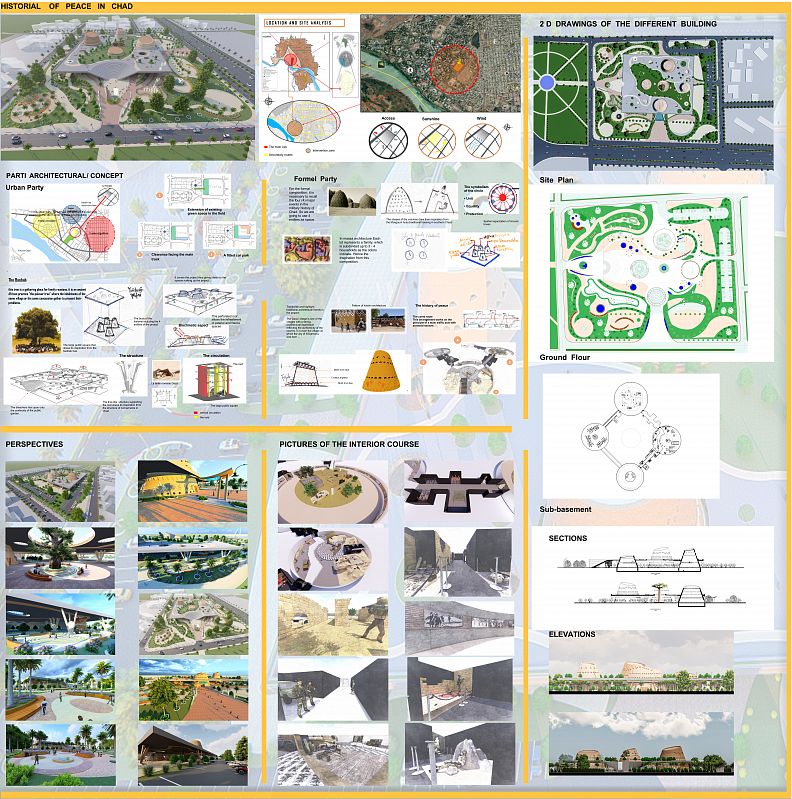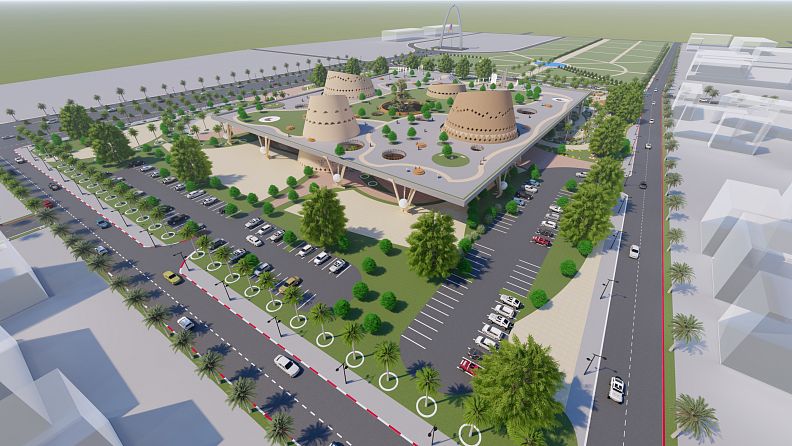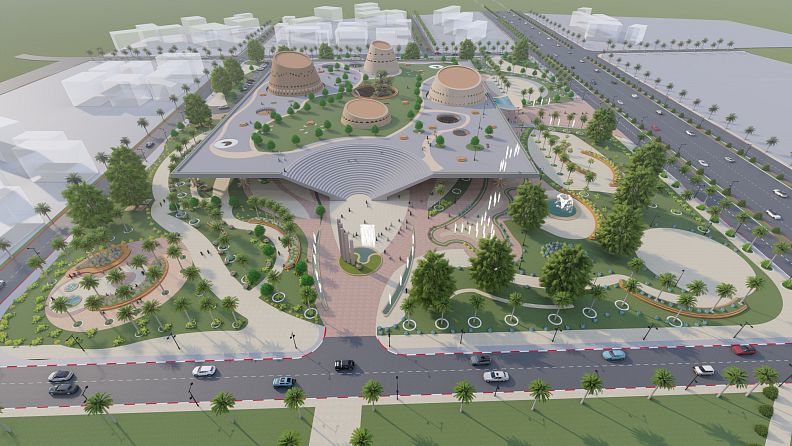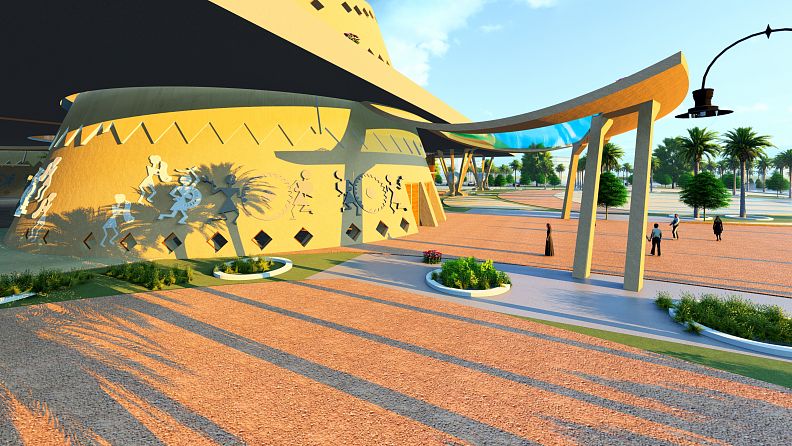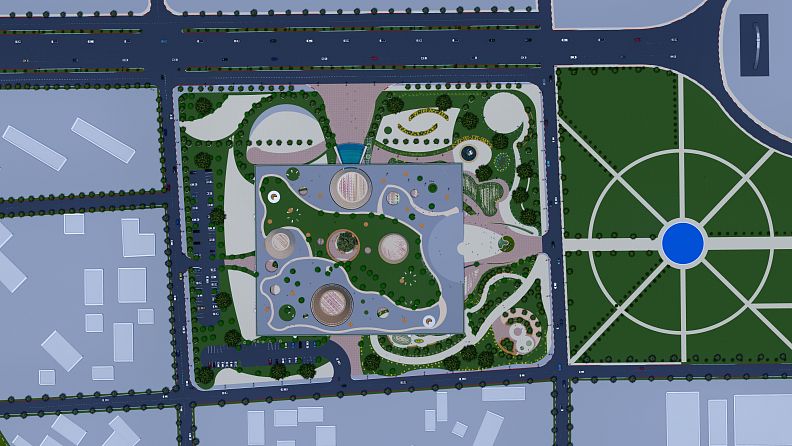Historial of Peace in CHAD

Project idea
Since Chad’s independence in 1960, which marks the creation of the CHADIAN NATIONAL ARMY, Chadians have experienced a succession of wars and bloody confrontations between opponents.
These tragic events have left in the memory of the Chadians indelible traces, bereaved families, material and human losses.
However, the military has always been the common thread connecting different eras.
In the past decade, Chad has made an enormous contribution to the maintenance of peace and security in the world. It is one of the countries which effectively combats Terrorism in the Sahel. Beyond these borders, the Chadian national army has participated in maintaining peace and security in several countries, notably in Mali, the Central African Republic, Cameroon, Nigeria, etc.
In the memory of many people, the history of this brave army remains a symbol of pride, stability and prosperity.
Despite the sacrifices made by this army, the memory of its combatants and the honor of their dead has never been saved or preserved. This is explained by the fact that in Africa, history is delivered to the oral, often entrusted to the memory of individuals to be considered as "living treasures" and transmitted from generation to generation.
Consequently, a promotion aiming at the safeguard of a rich heritage, even painful, and to honor the memory of these combatants proves necessary to transmit to future generations the history and the memory of these brave combatants who have sacrificed their lives to our detriment.
In short, this historial aims to be a place of reception and commemoration which serves to transmit an image of symbolism and emotions.
Project description
The main objective of the project ‘’ HISTORIAL OF PEACE IN CHAD ’’ aims to reconcile the past and the present while looking to the future.
On a social level, it will be a matter of creating a place open to the public, promoting exchange and interactivity.
From a historical point of view, the project will allow local and foreign visitors (tourists) to acquire knowledge related to the history of the Chadian army.
Architecturally , the primary objective is to design a space for exchange and sharing to strengthen peace and social cohesion. Secondly, reflect an architectural identity specific to Chad, taking into account the fusion between tradition and modernity (local materials, spatial organization, etc.).
Located in the heart of the capital, the project site once housed a military camp. The site was chosen because of its appearance in the collective memory.
Thus, the project is composed of three (3) parties:
• Urban party:
We took into account the elements existing on the site in order to make the composition. On the west side, the intervention field faces a public garden, so we opted for an extension of the existing green space in the project. On the south side, the land faces a large main track (Place de la nation), so we made a fairly large clearance for the visibility of the project in order to attract visitors from far away. And a car park on the east and north sides;
• Formal party:
For the formal composition, it is necessary to recall the four (4) major events in the history of the Army of Chad. So we used four (4) volumes to define the project entities. The four (4) project entities are covered by a roof, thus providing shade to the spaces making up the project. The shapes of the volumes draw their inspirations from the Mosgoum huts (traditional housing in southern Chad);
• Structural party:
At the level of the structural composition, we divided the four (4) entities by being inspired by the spatial composition of the traditional villages of Chad. The project is covered by a perforated roof inspired by the African baobab. This tree called BAOBAB is a gathering place for family reunions, it is an ancient African practice "the palaver tree" where the inhabitants of the same village or the same concession gather to exhibit their problems. This roof plays a bioclimatic role by cooling the exterior and interior spaces. It is supported by a tree structure supporting the roof drawing its inspiration from the structure of nomad tents in Chad.
Technical information
The field of intervention is trapezoidal and has an area of 30,281 m2 or approximately three (3) hectares. It is accessible from 4 sides. To the northwest by the main track leading to the Place de la Nation and by 3 secondary tracks.
A program of spaces and activities has been established with the objective of creating an architectural unity, while putting in a logic of harmony the functional and spatial relationships between the components of a historial while respecting the specificities of the environment.
Thus, the project organization chart is made up of a reception and administration space, a documentation space, a meeting and leisure space and temporary and permanent exhibitions that can be found on the ground floor. and upstairs.
The basement is dedicated exclusively to the museum trail which traces the history of the Chadian army as well as the exhibits following a comb tour. This arrangement works on the principle of a main traffic axis with annexed sectors.
The entities are covered by a perforated roof and accessible by steps which open onto the continuity of the public garden. This roof covers the project, thus providing shade to the last constituent spaces. Below the roof, there is the large public square which draws its inspiration from the African baobab, it allows the cooling of outdoor and indoor spaces.
The local materials used are: Terracotta brick for masonry, wood for the structure and urban furniture.
At the level of the Façades, we have transcribed and highlighted traditional architectural trends through patterns (Chadian Art) and holes drilled to naturally illuminate the interior of the volumes with light rays.
